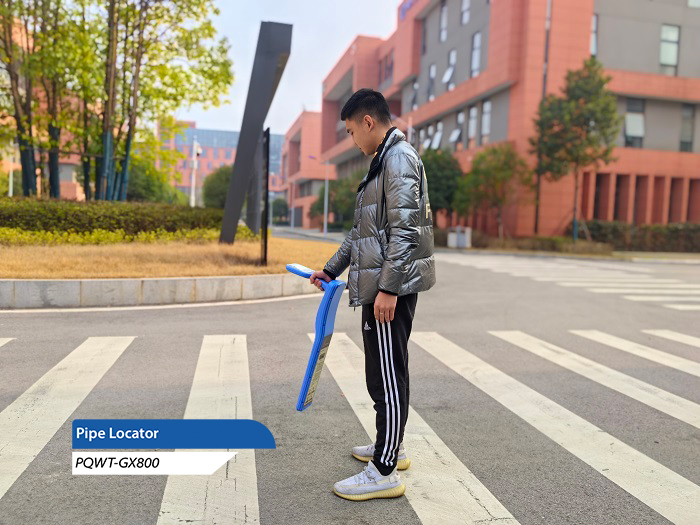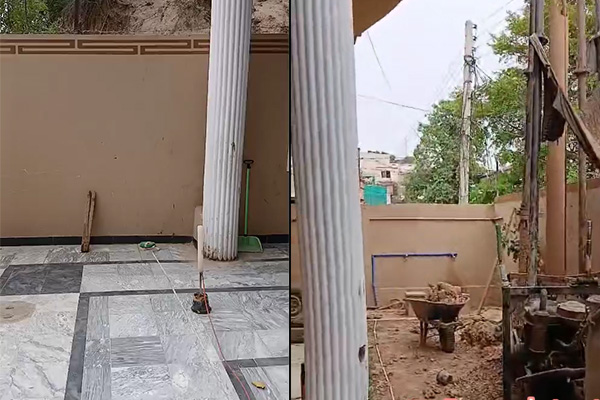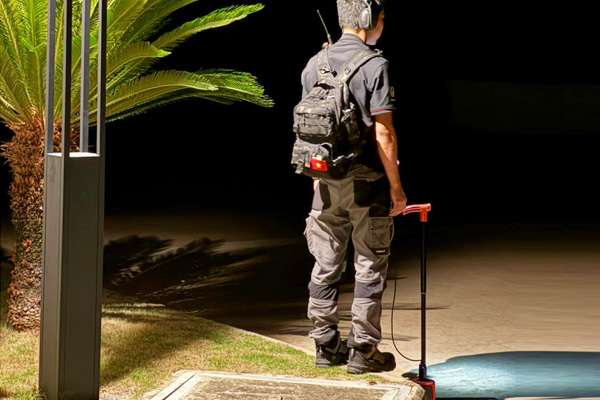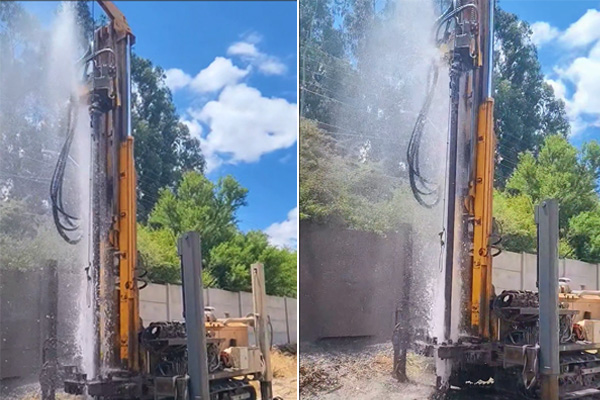In the grand narrative of urban construction and infrastructure maintenance, cable pipelines serve as the "blood vessels" and "nerves" of cities, intricately woven underground to sustain the normal operation of modern society. The Cable & Pipe Locator, a high-tech device specifically designed for locating and identifying underground cable pipelines, is playing an increasingly significant role.

I. Working Principle
The Cable & Pipe Locator operates primarily based on the principle of electromagnetic induction. When the transmitter of the detector applies an alternating current of a specific frequency to the target cable, an alternating magnetic field is generated around the cable. This magnetic field creates an inductive electromotive force in the surrounding space, which the receiver of the detector picks up through an induction coil and converts into an electrical signal for processing and analysis. By precisely measuring the signal's strength, frequency, phase, and other characteristics, combined with advanced signal processing algorithms and positioning technologies, the detector can accurately determine the cable's location, direction, depth, and type.
II. Core Components and Functional Characteristics
1. Transmitter
The transmitter serves as the signal source for the Cable & Pipe Locator. It generates alternating currents of multiple frequencies to accommodate the detection needs of different types, materials, and laying environments of cables. The transmitter boasts powerful output capabilities, ensuring that the signal can effectively transmit to the target cable in complex underground environments and produce a sufficiently strong magnetic field around it for the receiver to accurately capture. Additionally, the transmitter offers various connection methods, such as direct cable connection and inductive coupling, allowing flexible and convenient operation.
2. Receiver
The receiver is the "signal capture master" and "data analyst" of the detector. It is equipped with a highly sensitive induction coil that can sensitively detect weak magnetic field changes around the cable and convert them into electrical signals. The receiver integrates advanced signal processing circuits and microprocessors, capable of filtering, amplifying, digitizing, and other operations on the received signals to effectively remove environmental noise and interference signals, extracting the characteristic signals of the target cable. Through the built-in display screen and operation interface, operators can intuitively view the cable's location information, signal strength, depth data, etc., and can switch between multiple modes and set parameters as needed to meet the requirements of different detection tasks.
3. Positioning and Depth Measurement Functions
The Cable & Pipe Locator features high-precision positioning capabilities, accurately determining the cable's position in both horizontal and vertical directions. By adopting advanced positioning algorithms, such as the peak method, zero-crossing method, and bilateral positioning method, combined with the receiver's signal indication, operators can quickly and accurately track the cable's route. In terms of depth measurement, the detector uses a combination of electromagnetic induction principles and geometric relationships to accurately measure the cable's burial depth without damaging the ground. This is crucial for construction planning, underground pipeline maintenance, and avoiding cable damage during excavation in urban construction.
4. Multiple Detection Modes
To address the complex and varied underground cable pipeline environments, the Cable & Pipe Locator typically offers multiple detection modes. For example, the active detection mode is suitable for precise location and tracking of known cables by connecting the transmitter to the cable to obtain the strongest signal feedback for high-precision detection. The passive detection mode does not require a transmitter signal and can directly detect electromagnetic signals in the cable's surrounding environment, suitable for preliminary cable screening and location in unknown cable distribution areas to quickly identify potential cable routes. Additionally, some detectors feature depth measurement mode, current measurement mode, signal strength analysis mode, etc., allowing operators to flexibly select the appropriate detection mode according to actual detection task requirements, improving detection efficiency and accuracy.
III. Versatile Applications
The Cable & Pipe Locator has indispensable applications in various fields.
In urban construction and planning, whether for new road and building construction or old urban renewal projects, it is essential to understand the distribution of underground cable pipelines beforehand to avoid damaging cables during construction, which could lead to power outages, communication interruptions, and other severe consequences. The Cable & Pipe Locator provides accurate cable location information to construction units, helping them plan construction schemes reasonably and ensure smooth project progress.
In the daily operation and maintenance work of the power and communication industries, the Cable & Pipe Locator is an invaluable assistant for technicians. When cables fail and need repair or replacement, the detector can quickly locate the fault point, reducing outage time and improving the reliability of power supply and communication. Meanwhile, during cable line inspections, the detector can regularly detect the cable's laying path, depth, and other information, promptly discovering potential safety hazards such as cable displacement and settlement, providing strong support for preventive maintenance.
In archaeological excavation and geological exploration, the Cable & Pipe Locator also plays a crucial role. At archaeological sites, modern cables and ancient relics may be interlaced underground. The detector helps archaeologists accurately identify cable locations to avoid damaging artifacts during excavation. In geological exploration, the detector can determine the impact range of underground cable pipelines on geological exploration work, providing a reference for formulating exploration plans.
IV. Technological Development Trends
With the continuous advancement of technology, the Cable & Pipe Locator is also evolving and innovating.
On the one hand, the detector's precision and sensitivity are continuously improving. New detectors adopt more advanced sensor technology, signal processing algorithms, and microprocessor chips, enabling more accurate cable location and depth measurement in more complex underground environments. For instance, some high-end detectors use multifrequency transmission and reception technology, capable of simultaneously transmitting and receiving signals at multiple frequencies. By comprehensively analyzing signals of different frequencies, the detection capabilities and anti-interference performance for different types of cables are effectively enhanced.
On the other hand, the detector's level of intelligence is increasing. Modern Cable & Pipe Locators feature automatic calibration, intelligent recognition, data storage, and transmission functions. The automatic calibration function enables the detector to quickly adjust parameters under different environmental conditions, ensuring measurement accuracy. The intelligent recognition function automatically determines the cable's type, material, and other information based on the received signal characteristics, reducing the operator's workload and difficulty. The data storage and transmission function facilitate the management and sharing of detection data, allowing operators to transmit detection data in real-time to computers or other devices for further analysis and processing, providing strong support for the information management of underground pipelines.
Furthermore, with the continuous development of emerging technologies such as the Internet of Things, big data, and artificial intelligence, the Cable & Pipe Locator is expected to deeply integrate with these technologies to achieve more intelligent and automated underground pipeline detection and management. For example, connecting multiple detectors through the Internet of Things technology to form a network for real-time monitoring and dynamic management of underground cable pipelines in large areas; utilizing big data analysis technology to mine and analyze vast amounts of detection data, predict cable failure risks, and optimize cable maintenance plans; and leveraging artificial intelligence technology to develop intelligent detection algorithms to improve the detector's adaptability to complex environments and special cables.
As an essential tool in modern urban construction and infrastructure maintenance, the Cable & Pipe Locator is continuously evolving and improving with technological advancements. With its high-precision detection capabilities, versatile applications, and innovative technological trends, it plays an increasingly important role in ensuring the safe operation of underground cable pipelines and promoting sustainable urban development. In the future, with further technological development, the Cable & Pipe Locator will undoubtedly demonstrate its unique value and unlimited potential in more fields.








